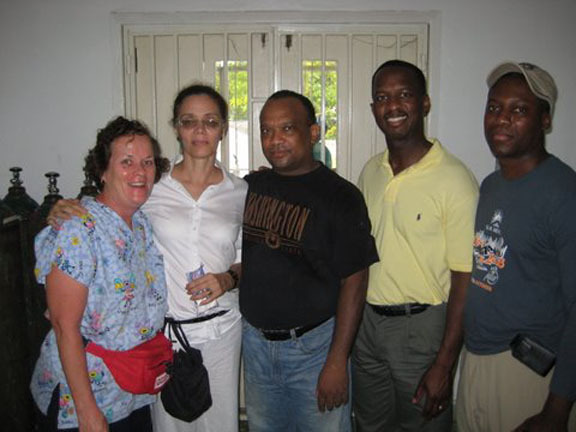SNCH staffers help heal Haiti
“At South Nassau, I would never see a case of an open fracture that 48 hours later had become gangrenous,” said Dr. Delcasse Joseph, a surgeon at South Nassau Communities Hospital. “Now you’re seeing 12 or 13 of them a day.”
Joseph was describing his experience in Haiti, where he arrived just 48 hours after the earthquake struck on Jan. 12. He traveled to the ravaged nation along with four other doctors and Sharon Erickson, a nurse at SNCH.
“The scene when you first arrive is truly surreal,” Erickson recalled. “There’s just so much devastation, and people with pickaxes and hoes trying to dig for their loved ones. But at the same time, it was amazing that so much looked the same as it did the last time I was there last June. And I find that mind-boggling.”
Joseph, a native of Haiti who moved to the U.S. just over 30 years ago, when he was 11, returns to Haiti once or twice a year on medical missions. Erickson accompanied him on his last two trips. “I said to one of the doctors that was with me, ‘If I didn’t know better, other than rubble, I would think life is normal,’” she said. “And he told me they’re a country of hardship, that they’re used to this. They pick themselves up and take it in stride — and it’s so true.”
But the scene that greeted the team was far different from their last missions. Their plane landed in the Dominican Republic, and they drove to the Haitian border, where they took a second car to the home of Joseph’s mother, who lives in the northern part of Haiti and had survived the earthquake.
Members of the group thought they would be working in the north, but they got a call informing them that they were needed in Port-au-Prince, in the heart of the devastation. After an eight-hour car ride up and down treacherous mountain roads, they arrived at what was left of the city, and started working outside a damaged Seventh Day Adventist hospital.
“When we got to the hospital, there were just people everywhere,” Erickson said. “There’s supposed to be a big grassy field outside the hospital, but you couldn’t see a speck of grass. And people were injured catastrophically — there were many fatalities while we were there. We saw numerous exposed bones and crush wounds.”

 62.0°,
Overcast
62.0°,
Overcast 











